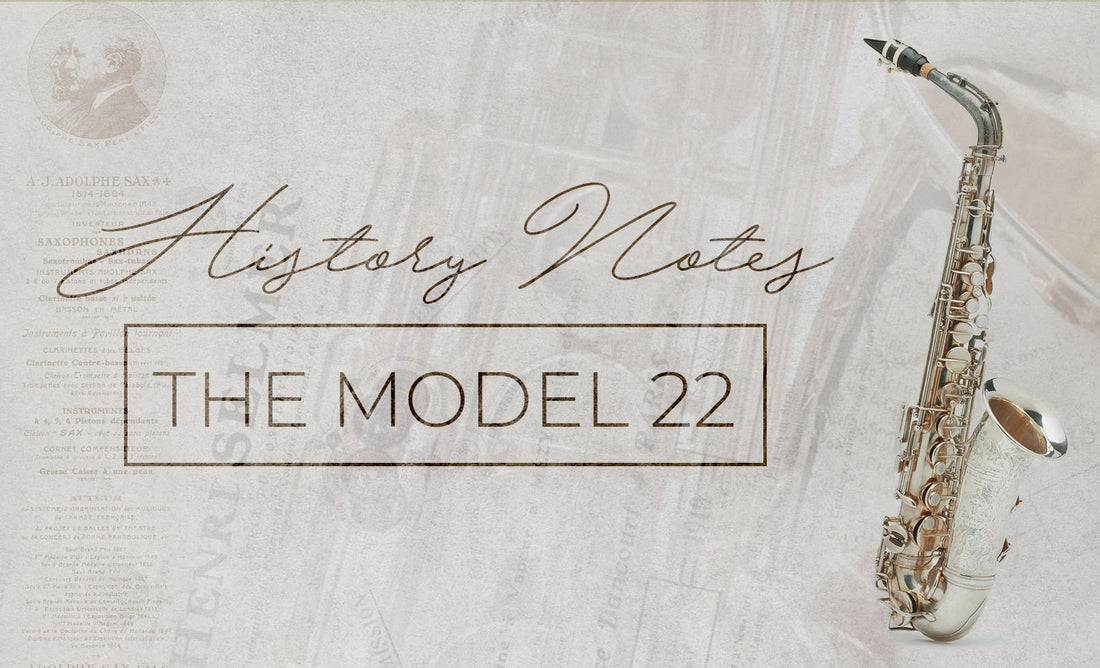History Notes #01 : Model 22

History Notes : the concept
Douglas Pipher is a Canadian saxophonist, arranger, composer and collector. Passionate about music and jazz, in particular, his interest in the history of Henri SELMER Paris began in the early 2000s, following the purchase of a mythical saxophone: the Radio Improved. He then began a tremendous amount of research work in order to list all the instruments produced by Maison SELMER, spending years photographing and archiving thousands of instruments. On several occasions, we have exceptionally opened the doors of our private archives to give him access to historical documents and allow him to carry out his research.

For Henri SELMER Paris and all the enthusiasts, Douglas Pipher has accepted to share the fruit of his investigations in a new web-series: History Notes. He retraces the history of the House through its legendary saxophones, from the Model 22 to the Super Action through the Super Sax and the different types of Mark VI... You will also know the difference between serial number and body number, and learn more about production & marketing throughout the world.
The Model 22
In this first episode, let's discover the history of the first SELMER saxophone: the Model 22.
The very first model that SELMER produced was the Series 1922.

This was introduced at the beginning of nineteen twenty two and ran for the entire year. Production was very small at this time : for the entire year, production was about four hundred saxophones.
At the beginning of nineteen twenty three, it clearly didn't make sense to call the instrument nineteen twenty two, so they changed the name to Model twenty two - or in French Model 22. The early saxophones prior to the model 22 used a non-automatic octave key and there were two separate octave keys. With the introduction of the Model 22, SELMER designed an automatic key, so you didn't have to think of which octave key to play. If you're familiar with playing very old instruments, it's a very clumsy problem when playing fast passages and this solved that really well.

With the introduction of the Model 22, Henri SELMER Paris produced a full line of instruments. They had a Sopranino in E Flat, a soprano in C, straight, a soprano in B flat in both straight and curved variants, an alto, a tenor in C (C Melody), a tenor in B flat, a baritone and a bass.
► Subscribe to our youtube channel so you don't miss any episode
►Next episode: Models 26&28
► Discover History Notes as a podcast